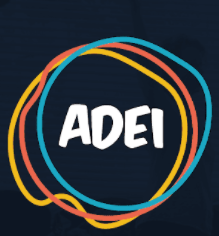Making Images
1. Essence Machines
Essence machines can be made by small groups or by a whole class. The machine which can capture the essence of a moment in a drama, a character’s feelings or a difficult decision is normally comped of three elements – movement, speech and sound. Members of the group become part of the machine one by one bringing with them a repeated sound, movement or fragment of language. Essence machines can be effective way of examining contrasts. Machines can be ‘operated’ by the teacher using signals which control volume and tempo. They can build up to include the whole class at the one time, or alternatively people (the machine parts) may enter or go from the machine.
2. Freeze-Frame
A freeze-frame is the deliberate halting or freezing of action within a drama. The freeze needs to be cued for example by the teacher calling out ‘freeze’, a drum beat or by the cutting of the accompanying music. The freeze is an opportunity for members of a class to see and reflect on what is happening in the drama at that exact moment and perhaps to examine other people’s frames together for interpretation, discussion and analysis. Just as a cueing mechanism is used to freeze action another cue is needed to reactivate it.
3. Image Theatre
This involves the composition of a series of two or more still images. Often these images are contrasting showing different sides of an issue or a character, or may be ‘the reality’ of a situation in contrast to ‘the ideal’. In image theatre slow-motion transitions between contrasting images can often make effective, engaging and meaningful performance to which words or sounds can be added.
4. Still Image
A still image is also a moment frozen in time but this image has been devised and composed intentionally to represent an idea or moment in order to show it to the others. Still images can be made by individuals, small groups or by whole groups. Although they are often composed using just participants’ bodies, props, costumes and captions can be added to communicate additional meaning. Still images can be composed spontaneously and very quickly or built up gradually person by person. The image composition process can be accompanied by detailed discussion and verbal negotiation but it is sometimes interesting to ask groups to make their images without talking thus relying on non-verbal means of communication.
5. Storyboard
Storyboard is a form of image theatre which focuses on sequencing a narrative. Small groups may be asked to represent a story or part of a story by making a series of still images. In creating their images, groups will need to think about character and incident but also about structure and sequence. For example, some stories need to be told in chronological order but others benefit from flashbacks or leaps into the future.
Transitions between the still images can animate the storyboard and retell the story while captions and speech bubbles can add commentary and dialogue. Sometimes a whole class can create a storyboard with subgroups taking responsibility for an individual part of a story. Digital photography and filming can provide one way of recording and sharing storyboards.
Still-images, freeze-frames and storyboards can be given written captions. Although it could be argued that a well-composed image should be able to communicate its meaning without the need for words. However the writing of captions can sometimes encourage groups to reflect on their images from an audience perspective and perhaps to make improvements.
